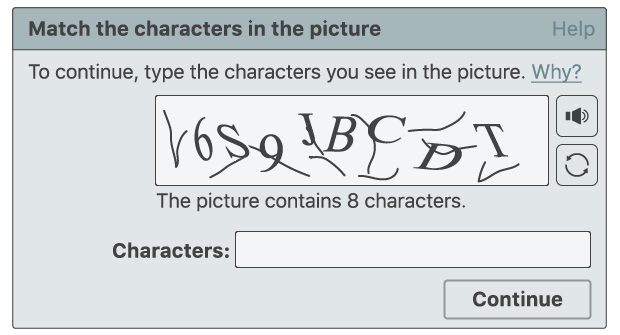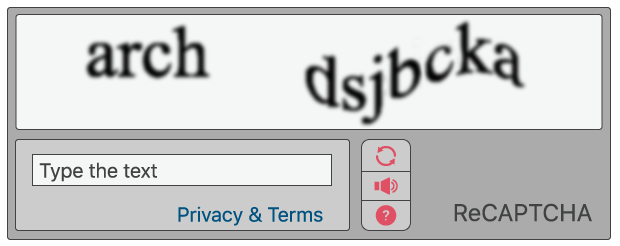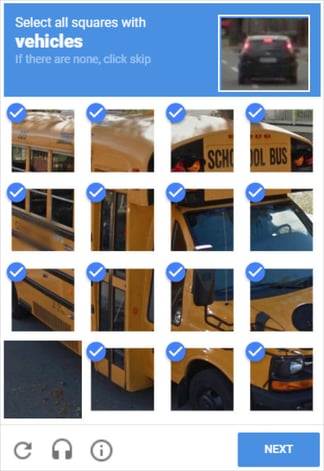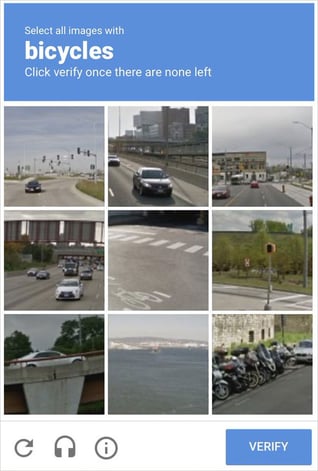Captcha
Stop asking visitors if they are a robot, with Anura, you already know!
Discover why traditional CAPTCHA methods are no match for today’s advanced bots and fraudsters. Learn about the downsides of CAPTCHA and ReCAPTCHA technology, and how Anura is addressing these limitations to improve user experiences and protect websites from fraud.

The Basics about CAPTCHA
CAPTCHA has been the go-to method for distinguishing humans from bots on websites, yet fraudsters have found ways to get around it. The acronym stands for "Completely Automated Public Turing test to tell Computers and Humans Apart" - designed initially to deter ad fraud but quickly becoming outpaced as fraudulent automation advanced.
Subsequently, reCAPTCHA technology rolled out with three successive versions (reCAPTCHAv1, noCAPTCHA reCAPTCHA & v3) that all had their own issues in dealing effectively with bots.
What is ReCAPTCHA?
As bots continue to evolve, Google has responded with ReCAPTCHA technology - an advanced version of CAPTCHA. Instead of simply clicking on images or entering captions as in traditional CAPTCHAs, ReCAPTCHA features more complex challenges such as typing distorted text and selecting pictures related to a certain concept. It also includes a box that verifies the user is not an automated system.

CAPTCHA

ReCAPTCHA

NoCAPTCHA
The Downsides of CAPTCHA and Why It Fails to Stop Ad Fraud
The Downsides of CAPTCHA
CAPTCHA may look like an effective fraud solution, but it is not without its drawbacks:
CAPTCHAs Hurt the User Experience
Up to two-thirds of website users are unable to pass traditional CAPTCHA tests on the first try. This can be a huge source of customer frustration and cause them to abandon forms or online shopping carts altogether due to their difficulty in recognizing low-resolution images or needing an extra click - creating missed opportunities for businesses trying hard at delivering enhanced user experiences.
CAPTCHAs Can Waste Customers’ Time
The competition for high-demand items demonstrates a clear disadvantage that humans have compared to bots. CAPTCHAs are meant to block non-human users from accessing restricted areas of content, but they, unfortunately, slowed down legitimate human buyers in comparison. While manually inputting CAPTCHA codes can take seconds or longer, bots may bypass them with almost instant speed - unhindered by such obstacles and allowing plenty of time to scoop up those limited-edition items before anyone else has the chance!
Killing Conversion Rates
CAPTCHA systems are not just a nuisance to consumer experiences - they have tangible long-term consequences. Studies show that the conversion rate drops 40% when customers encounter captchas, and these negative interactions make it much harder for businesses to earn loyalty in the future.


Confusing ReCAPTCHAs
Why CAPTCHA Fails to Stop Ad Fraud
Fraudsters Are Getting More Sophisticated
Fraud bots have become more sophisticated, with the rise of special bots and human labor designed to bypass CAPTCHAs and reCAPTCHAs. The challenge for businesses is how to protect their valuable leads from these increasingly tenacious automated fraudsters.
False Positives with CAPTCHA
CAPTCHA technology, while intended to stop spam and protect websites from bots and fraudsters, can sometimes be too effective. Anura's data shows reCAPTCHA v3 has a high false-positive rate leading to real prospects being wrongly blocked - costing businesses potential customers who will take their business elsewhere instead of dealing with the barrier these tools have put in place.
Not All Fraud Is Caused by Bots
Fraudsters have a new tool in their arsenal - Human Fraud Farms. Consisting of real people, workers in these farms can complete forms to generate fake leads that CAPTCHA tools can't detect easily.

